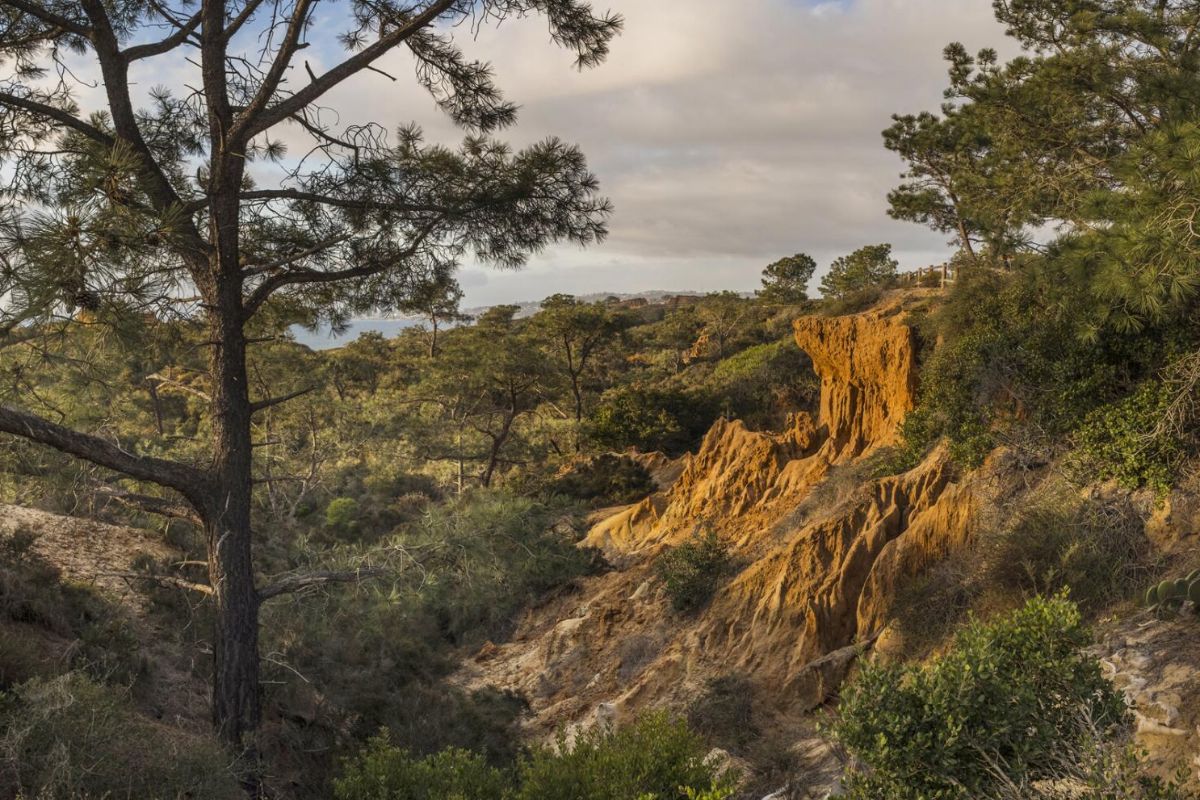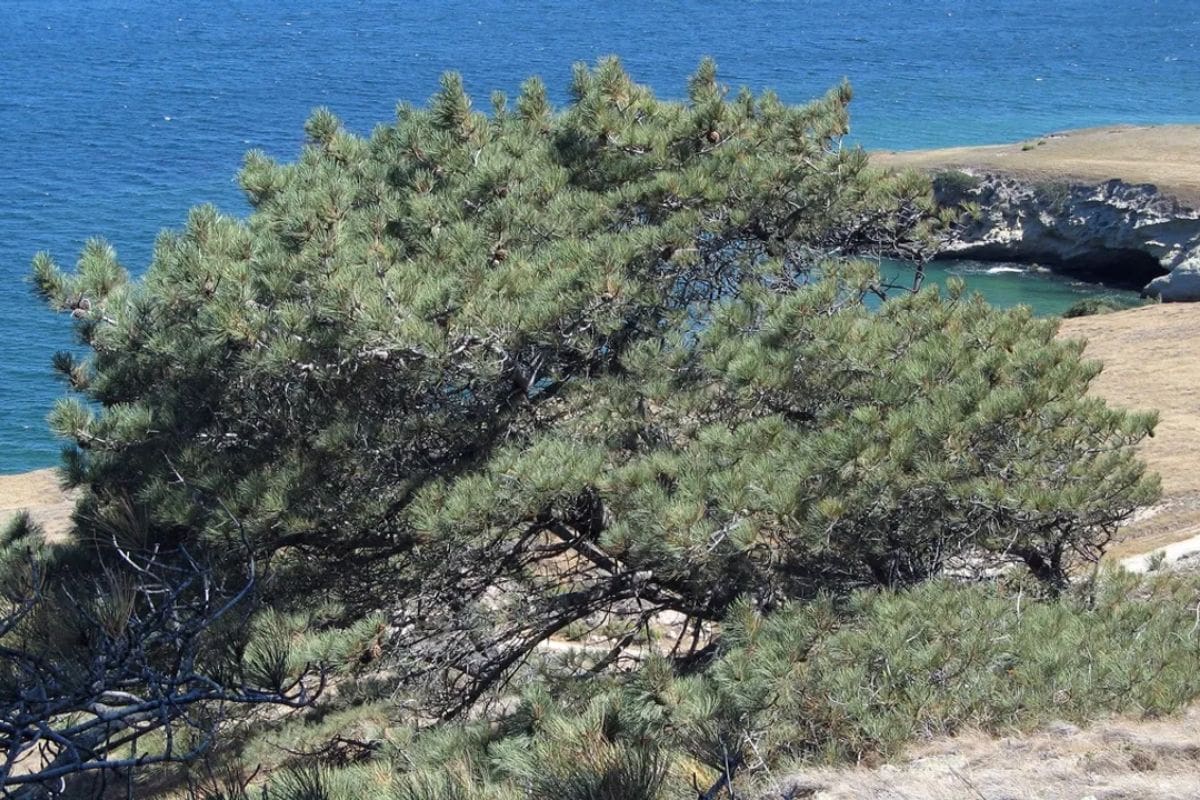Nature Survivor in Southern California: You won’t believe the sheer tenacity and resilience of the Torrey Pine, a tree that has defied the odds and thrived in the harsh conditions of Southern California.
The Torrey Pine is not just any ordinary tree; it is a remarkable survivor that has endured centuries of challenges and managed to carve out a niche for itself in this unforgiving landscape.
Its story is one of historical significance, conservation efforts, and a symbol of hope for the future.
So, let’s embark on a journey to discover the secrets behind the Torrey Pine’s adaptability and endurance, and explore the conservation outlook that makes it a true testament to nature’s indomitable spirit.
Key Takeaways
- The Torrey Pine demonstrates remarkable resilience and adaptability, withstanding strong winds, drought, and wildfires.
- Its thick bark acts as a protective shield, reducing water loss and providing stability.
- The long taproot of the Torrey Pine allows it to access water deep underground, enabling it to survive in dry, arid conditions.
- The Torrey Pine’s extensive root system absorbs moisture from the surrounding soil and its coastal preference for foggy environments helps it endure hot, dry spells.
The Resilience of the Torrey Pine
The Torrey pine stands tall, defying the challenges of the modern age and showcasing the remarkable resilience of nature. This ancient survivor has adapted to its harsh environment, displaying a strength that captivates those who witness its majestic presence.
Despite its relatively small population and limited distribution, the Torrey pine has managed to endure through the ages. Its ability to withstand strong winds, drought, and even wildfires is a testament to its resilience. The thick bark of the Torrey pine acts as a protective shield, shielding it from the scorching sun and reducing water loss. Additionally, its long taproot enables it to access water deep underground, allowing it to survive in dry, arid conditions.
The Torrey pine’s ability to thrive in such challenging circumstances is truly awe-inspiring, reminding us of nature’s indomitable spirit.
Historical Significance and Discovery
Uncovering the historical significance and discovery of the Torrey pine reveals a captivating tale of exploration and preservation. Here are some key facts:
- Discovered by Charles Christopher Parry in the mid-19th century and named after the esteemed botanist John Torrey, the Torrey pine holds historical importance.
- Once part of extensive western U.S. pine forests, it now exists only in two isolated populations—San Diego County and Santa Rosa Island.
- These groves are the last vestiges of a forgotten era, making the Torrey pine one of the rarest pines globally.
The Torrey pine’s discovery by Parry showcases the spirit of exploration that characterized the 19th century. Parry, a renowned botanist, ventured into uncharted territories, stumbling upon this unique species.
The naming of the pine after John Torrey, a fellow botanist and mentor to Parry, pays tribute to the collaboration and camaraderie among scientists during that era.
The Torrey pine’s restricted distribution today highlights the importance of preservation efforts to conserve this living relic from a bygone era.
Conservation Efforts and Sanctuary Creation
With the historical significance and discovery of the Torrey pine in mind, let’s now explore the incredible efforts made towards its conservation and the creation of a sanctuary. One of the key figures in this endeavor was Ellen Browning Scripps, an environmentalist and philanthropist who played a pivotal role in preserving the Torrey pine. Through her foresight, land was purchased in San Diego, leading to the establishment of the Torrey Pines State Natural Reserve. This protected sanctuary not only ensures the survival of the Torrey pine, but also provides a haven for diverse flora and fauna. The table below highlights the important conservation efforts and sanctuary creation related to the Torrey pine:
| Conservation Efforts | Sanctuary Creation |
|---|---|
| Purchase of land in San Diego | Establishment of the Torrey Pines State Natural Reserve |
| Preservation of the Torrey pine | Protection of diverse flora and fauna |
| Pivotal role played by Ellen Browning Scripps | Creation of a haven for the Torrey pine’s survival |
These efforts have been instrumental in safeguarding the Torrey pine and its unique ecosystem, ensuring its continued existence for future generations.
Adaptability and Endurance
Endowed with remarkable adaptability and endurance, the Torrey pine stands as a testament to nature’s resilience. This magnificent tree possesses key traits that enable it to thrive in challenging conditions, making it a true survivor. Consider the following:
- Long taproot: The Torrey pine boasts a taproot that extends deep into the ground, providing stability and accessing water sources that other trees can’t reach.
- Extensive root system: In addition to its taproot, this tree possesses a vast network of roots that spread wide and shallow, allowing it to absorb moisture from the surrounding soil.
- Coastal preference: The Torrey pine’s affinity for foggy coastal environments in Southern California bolsters its endurance. The cool, moist air provides much-needed relief during hot, dry spells.
With these adaptations, the Torrey pine remains steadfast and resilient, adapting to adversity and flourishing in its natural habitat.
Nature’s survivor indeed.
Also Read: The California Storms Rivers to Recovery Assessing
Conservation Outlook and Symbol of Hope
Conservation efforts have brought renewed hope for the Torrey pine, a living testament to the importance of preserving biodiversity and striking a harmonious balance between human progress and the natural world.
As a survivor from a bygone era, this majestic tree symbolizes the resilience of nature and the possibility of coexistence.
The Torrey Pines State Natural Reserve, with its breathtaking landscapes, serves as a powerful reminder of the need to protect and conserve this rare species.
Despite the challenges it faces, the Torrey pine stands as a symbol of hope for the future of our planet, inspiring us to take action and ensure the survival of endangered species.
Conclusion Of Nature Survivor in Southern California
The Torrey Pine stands tall as a symbol of resilience and hope in Southern California. Despite facing numerous challenges and threats, this unique tree species has managed to adapt and endure in its natural habitat.
Thanks to conservation efforts and the creation of sanctuaries, its future is looking brighter. The Torrey Pine serves as a reminder of nature’s ability to survive and thrive, inspiring us to protect and cherish our precious ecosystems.
Our Reader’s Queries
What is Torrey Pines famous for?
Torrey Pines South Course, renowned for hosting two U.S. Opens, witnessed Tiger Woods securing victory in a thrilling sudden-death playoff against Rocco Mediate in 2008 and Jon Rahm claiming the title in 2021. Additionally, the prestigious San Diego City Amateur Golf Championships grace its fairways every June, followed by the Junior World Golf Championships in July.
Are Torrey Pines native to California?
The Torrey Pine, the scarcest pine in North America, thrives exclusively in two limited regions of California, divided by a vast expanse of 175 miles of ocean. One population flourishes on the coastal bluffs of Soledad Valley, situated north of San Diego. The majority of these trees find protection within the confines of the Torrey Pines State Reserve (TPSR) and the Torrey Pines Extension.



